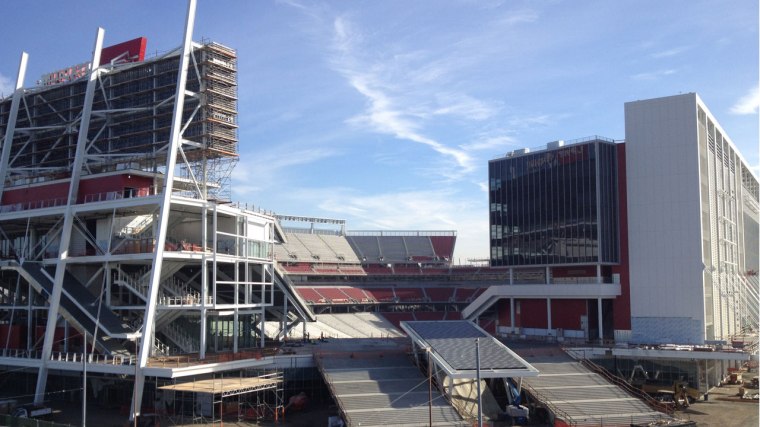I’m wrapping up a week in New York City today just in time to get out before snowpocalypse hits the East Coast (I hope). My MBA cohort travels to major cities a few times per year to meet with executives and alumni in notable businesses, and this past week I joined the Warsaw Sports Marketing Center on their visits to ESPN, the NFL, the NBA and the New York Road Runners. Since I was the only student from the Center for Sustainable Business Practices on these visits, I thought discussing what corporate social responsibility means in the world of sports would be a good jumping off point for my first in-depth blog post.
In a session on sustainability reporting at the SXSW Eco Conference 2015 that I attended last year, Tim Mohin said that companies should measure and report on the impact areas that are most relevant to their business. For professional sports teams and leagues, this means focusing on youth, community and physical and mental health.
In case you live under a rock or don’t follow the latest sports gossip, the NFL has come under fire in the last few years due to some high-profile domestic violence cases amongst key players. In response, the NFL has introduced numerous initiatives to address domestic violence with players and in the community. While the NFL would tell you that this is part of their commitment to social responsibility, I would argue that this is simply good PR.
Missing from the conversations this week, however, was a discussion of the environmental impacts of professional sports games. These games require substantial electricity and generate large amounts of waste, but managing these impacts often falls on the stadiums themselves. And most of the time, stadiums don’t even have recycling bins. To improve corporate social responsibility in the professional sports industry, teams and leagues should partner with their home stadiums to decrease their environmental impact.
The San Francisco 49ers are a perfect example of how a professional team can address both social and environmental responsibility. Their brand new Levi’s stadium is LEED Gold certified and is the first to utilize recycled water for field irrigation and other essential stadium functions. According to an article by the Green Sports Alliance, “the cooperation between the 49ers and local government and other organizations shows that strong partnerships can help to conserve natural resources and set new environmental standards for sports venues.”

Experiential learning trips with my cohort are always eye opening, and I’m glad I could use the opportunity to dig deeper into what CSR means in the sports industry.

